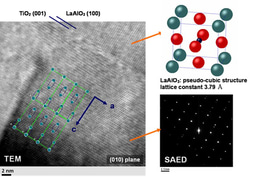Navigating the Age of Biometrics: Are Our Bodies Really an Efficient Security Solution?
Published in Computational Sciences

Today, biometrics are everywhere. As much as 81% of smartphones had biometrics enabled in 2022, while 2023 saw 46% of passengers use biometrics at airports in a significant jump from the 34% recorded just one year prior[1].
The world of healthcare has seen similar sharp increases in the adoption of biometrics. According to Insight Ace data, the global biometrics-as-a-service in healthcare market size is expected to grow at a 16.12% CAGR into a $2.47 billion industry by 2031[2].
But how effective is the biometrics boom? And is it really safer than alternative security solutions?
People as a Verification Tool
Biometric systems generally come in two forms, physical biometrics and behavioral biometrics. Both systems have become increasingly popular for matters of identification and verification in recent years. While behavioral biometrics focuses on voice input and other factors like typing speeds, cursor movement, and finger pressure, physical biometric systems focus largely on our bodies as a source of information[3].
This means that our physical characteristics like fingerprints, eyes, faces, and even our gait can become our digital signatures. These signatures are then stored in a database to cross-check when verifying our identity.
Biological IDs
Data suggests that the use of biometrics as identification systems in healthcare is an effective way of preventing patient misidentification.
According to a survey carried out at the Ponemon Institute, 64% of healthcare professionals have said that patient misidentification happens frequently. Likewise, 84% of respondents either agree or strongly agree that misidentification can lead to medical errors that induce injury or illness[4].
Worryingly, a World Health Organization report has suggested that 2.6 million people die each year as a result of medical errors, including those linked to patient identification[5].
The necessity of a more robust identification system extends into all areas of life, with approximately 2.3 million cases of medical identity theft recorded in the United States in 2021[6].
As use cases in biometric technology grow, instances of misidentification and identity theft are being countered with the help of our own biological IDs. Fingerprint, iris, and facial recognition are helping to safeguard patients from the damaging health and economic impact of identification issues throughout the health sector.
The power of biological identification is such that virtually all modern smartphones will only allow access to personal information with the submission of biometric data. Smartphones like Apple’s modern iPhones have even pivoted from fingerprint access to attention-based facial recognition. This means that users will not only need a registered face to use their banking apps, for instance, but that registered face will have to be looking directly at the screen to use the device.
Biometrics have become a core component of multi-factor authentication on a number of apps that require a sufficient level of security, and this helps to provide the necessary protection of sensitive information. But how accurate and safe are our bodies at preventing security issues?
Are Biometrics Safe?
The amazing thing about our bodies is that they possess a lot of unique identifiers. Apple’s decision to file a patent that would reportedly open the door for heartbeat verification raised many eyebrows across the world of technology[7].
Much like fingerprints and facial recognition, our heartbeats are unique. The distinctive waveforms created by the expansions and contractions of our hearts offer just the right level of differentiation from person to person in a way that can enable technology to tell us apart.
This has the potential to transform the future of wearable technology and to prevent more instances of healthcare fraud, but could this rapid emergence of biometric identifiers run the risk of more false positives emerging?
False positives occur when systems incorrectly match inputs with non-matching templates. Much like false negatives fail to match biometrics with their identical templates, false positives can undermine identification technology.
Worryingly, false positives can occur through ‘spoofing’ biometric features like fingerprints or even facial features. Deepfakes have become a danger to some biometric identification tools, while photographs and even 3D-printed fingerprints have the potential to bypass vulnerable biometric security features[8].
It’s for this reason that the adoption of biometric technology needs to be heavily researched before it’s implemented by privacy-focused firms or businesses dealing with confidential information. Fortunately, two-factor and multi-factor security systems can help add extra layers of security to keep data safe.
Biometric verification can also become inefficient if a user’s biometrics change, which can happen after an injury or through body modification. If somebody is involved in an accident that changes their physical appearance in a way that forces their smartphone’s facial recognition system to fail, it could leave them locked out of their essential apps on an ongoing basis[9].
Likewise, if a fire causes permanent damage to their fingerprints, it can be challenging to participate in biometric security systems.
Health and Banking
The Deloitte Center for Financial Services has predicted that synthetic identity fraud will result in losses of at least $23 billion by 2030, and much of this will occur through biometric banking security threats[10].
Biometric payment trends are rapidly evolving and are set to become a leading verification tool for making transactions in the future[11]. The exploration looks at identification technologies surrounding vein patterns, DNA matching, and a variety of other biological ID methods to assure safety using open banking tools.
In the post-pandemic landscape, biometric identification has gained a dual purpose to uphold security and user safety at a time when the health impact of using banknotes and card machines could spread germs and disease.
The ability to make a contactless payment or via smartphone using facial recognition means that, for the first time in human history, we’re able to pay for goods and services without coming into contact with foreign objects that have been repeatedly handled.
This can improve the hygiene credentials of many everyday processes that could pay dividends should another health crisis emerge[12].
The Future of Biometrics
Biometrics have the potential to transform security across a wide range of industries while improving user hygiene and confidence at a time when healthcare misidentification can lead to significant cost and health ramifications.
The proliferation of biometric identification methods could help to combat instances of fraud, which have become more hazardous in the era of 3D printing and deepfakes. This will challenge more adopters to continue scaling their technology to overcome new threats over time.
When implemented correctly, biometric security can have a positive impact on our lives across different sectors. It may not yet be a flawless security solution, but the future certainly looks bright for using our bodies as our IDs.
References
[1] Woolfe, M. (2024, October 15). 29+ Biometrics Statistics for 2024. PhotoAiD. Retrieved November 15, 2024, from https://photoaid.com/blog/biometrics-statistics/#:~:text=Top%20Biometrics%20Statistics,-By%202025%2C%20the&text=As%20of%202022%2C%20biometrics%20are,Americans%20use%20facial%20recognition%20technology.
[2] Biometrics as a Service in Healthcare Market Size, Scope, Share and Trends to 2031. (2024, May 16). InsightAce Analytic. Retrieved November 19, 2024, from https://www.insightaceanalytic.com/report/biometrics-as-a-service-in-healthcare-market/1569
[3] Hiremath, O. (n.d.). Risks & Benefits of Biometrics in Security. Software Secured. Retrieved November 19, 2024, from https://www.softwaresecured.com/post/risks-and-benefits-of-biometrics-in-security
[4] Biometrics in healthcare: Improved safety and privacy for patients. (2018). Aware. Retrieved 11 15, 2024, from https://www.aware.com/blog-biometrics-in-healthcare/
[5] WHO calls for urgent action to reduce patient harm in healthcare. (2019, September 13). World Health Organization (WHO). Retrieved November 19, 2024, from https://www.who.int/news/item/13-09-2019-who-calls-for-urgent-action-to-reduce-patient-harm-in-healthcare
[6] Identity Theft Statistics 2024 By Reveal, Risks, Technology. (2024). Market.us Scoop. Retrieved November 19, 2024, from https://scoop.market.us/identity-theft-statistics/
[7] Chawla, A. (2024, 07 31). iPhone users may be able to unlock their devices via heartbeat in near future, Apple files patent. Hindustan Times Tech. Retrieved 11 15, 2024, from https://tech.hindustantimes.com/mobile/news/iphone-users-may-be-able-to-unlock-their-devices-with-via-heartbeat-in-near-future-apple-files-patent-71722414862174.html
[8] Abrams, A., & Skrebneva, O. (2024, 08 22). Biometric Authentication—Benefits and Risks (2024). The Sumsuber. Retrieved 11 15, 2024, from https://sumsub.com/blog/biometric-authentication-benefits-risks/
[9] Bocetta, S. (2023, July 7). Biometric Authentication: The Good, the Bad, and the Ugly. GlobalSign. Retrieved November 19, 2024, from https://www.globalsign.com/en/blog/biometric-authentication-good-bad-and-ugly
[10] Edelman, K. (2023, August 29). Using biometrics to fight back against rising synthetic identity fraud. Deloitte. Retrieved November 19, 2024, from https://www2.deloitte.com/content/dam/insights/articles/us176550_cfs_fsi-predictions_behavioral-biometrics-and-banking/US176550_Behavioral-biometrics-and-banking.pdf
[11] Payment Trends: The Evolution of Transactions in Business. (2024, July 18). Epos Now. Retrieved 11 15, 2024, from https://www.eposnow.com/uk/resources/payment-trends/
[12] Biometric Payments – The Hygienic and Secure Way to Shop. (n.d.). IDEX Biometrics. Retrieved 11 15, 2024, from https://www.idexbiometrics.com/biometric-payments-the-hygienic-and-secure-way-to-shop/





Please sign in or register for FREE
If you are a registered user on Research Communities by Springer Nature, please sign in